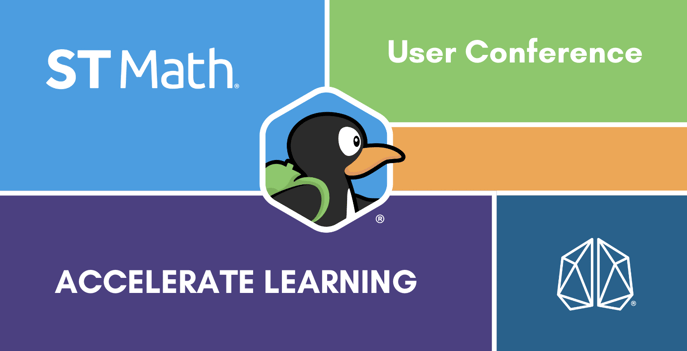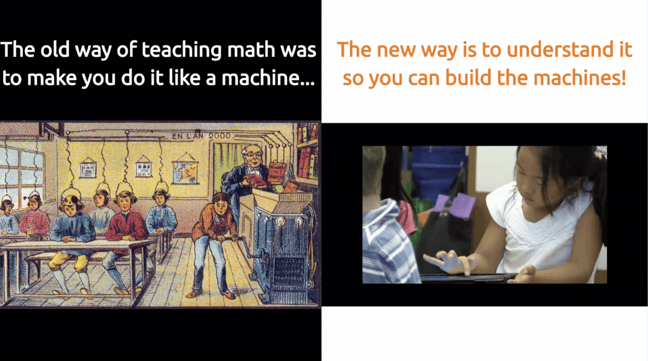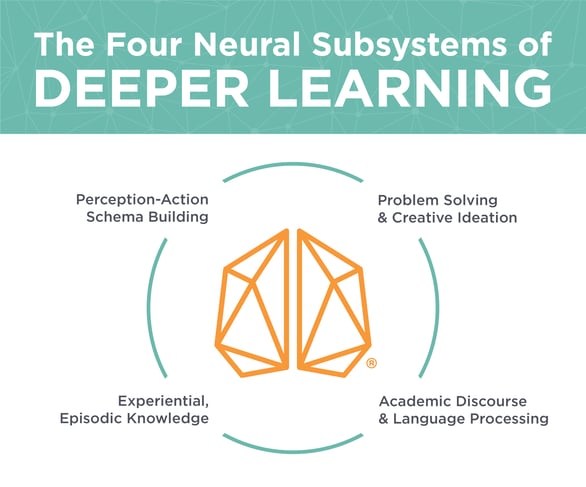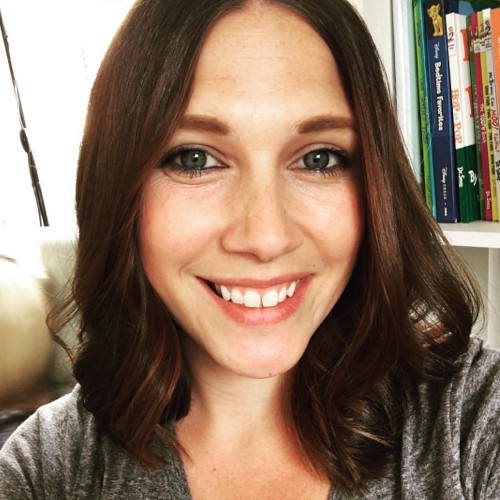
How Administrators, Educators, and Students Accelerate Learning
Here at MIND Education, we’ve been brimming with excitement these past few months as we prepared for our 2023 Annual ST Math User Conference. Like every year before that, it was a wonderful learning experience!
The last few years have been challenging for educators and non-educators alike. Student academic achievement reached an all-time low. The pandemic has transformed how students learn and how teachers teach—and permanently changed the landscape of formal education. Many principals, educators, and parents are still left with the unsettling question of just how consequential the pandemic was and how it impacted student academic achievement. The question on all our minds is: What can we do to accelerate the learning of our young scholars?
Unsurprisingly, distance learning had an unfavorable impact on students of all ages. Rather than focusing on what students are not able to do, however, MIND Education adheres to an asset-based lens. Students are capable of many things. So how do we meet them where they are?

Rather than asking, “How do we teach?” Nigel Nisbet, MIND Education’s Vice President of Content Creation asks, “How do we learn?” What if we could teach mathematics the way the brain learns? The antiquated classroom model, in which students passively sit and receive information, is ineffective. Students must be active contributors to the learning process—the underlying philosophy and approach behind ST Math. Nigel describes this as “The Future of Transforming Math Instruction.”

Administrators, ST Math champions, and educators joined to share best practices and collaborated on how to Accelerate Learning.
Throughout the 4 hours of the User Conference, choosing which breakout sessions to attend was difficult. The titles alone were enticing: The Only Thing That Limits You is You, ST Math Usage and Higher Test Scores, Next Year-When Everything is Perfect, and Elevating Student Voices with ST Math, just to name a few.
Several presenters provided an exclusive peek into their schools and how ST Math has impacted the lives of their students. Two overarching themes emerged:
Let’s dive into the first theme: Administrative support. Districts with a consistent and invested administrator experience more success with their ST Math implementation. Teachers make the magic happen in the classroom, while an administrator can change the entire culture of a school or district.
Many skills students acquire while playing ST Math translate seamlessly across other content areas and in their lives outside of school. Students become proficient in persevering and problem-solving, and they understand that mistakes are learning opportunities. When the JiJi culture is strong on campus, it’s contagious. This transformation to a growth mindset with ST Math can only happen with the administration’s support.
In an effort to empower district leadership, Michelle Junkin, a Professional Learning Specialist at MIND Education, presented An Introduction to ST Math for Administrators. Principals, curriculum specialists, and coaches had the opportunity to dive into their school’s data, ask questions, and uncover components of the program.
For instance, there are facilitation tips built directly into the platform. Teachers can access facilitation questions, strategies on how to help a stuck student, and more details on how to solve the puzzle, simply by clicking on the student’s screen while they play. Students are provided with an annotation tool so they can draw pictures, write expressions, etc., directly on their screen as well. There were many enthusiastic head nods and participants said they were eager to get this knowledge back to their colleagues.
Another highlight that resonated with the participants was Robin Lovell’s session titled Next Year, When Everything is Perfect.... Robin is a district Math TOSA (Teacher on Special Assignment) for San Mateo Foster City School District. She described her experience with a student from Thailand who did not yet speak English and had her play ST Math’s “Fractions on a Number Line.” While she could not assess the student verbally on her schema around fractions, this student was able to “zip right through the game,” as Robin said. “Here is a child that allowed us to see that she understood a whole lot more than her words could explain.”
And because Robin was already bought into ST Math and saw its value, she knew that watching this child play for a bit would provide a great deal of insight. Not only did ST Math serve as an informal assessment in this case, but it was extremely valuable for this young mathematician. Students are able to see themselves as learners and feel more confident doing math when they interact with the visual models embedded in the software.
ST Math Usage and Higher Test Scores was also a very popular session. So often, standardized tests and scores are a hot topic. However, test scores do not define a child. We want test scores to improve, but more importantly, we want to provide students with the conceptual understanding to solve complex math problems. If they can build a rich schema around math, positive test scores will inevitably follow. One of the key takeaways from Tammy Smith was her method for keeping her staff and students accountable to the program.
In order to accelerate the learning process, the goals and outcomes are clearly communicated to the students. Students can track their progress with various data trackers and progress posters found on the ST Math Help site.
Tammy Smith also shared walk-through forms for admins like herself, including what to look for when observing students on ST Math. While this requires time and effort on the administrator’s part, the return on investment is well worth it. They saw test scores increase after Covid! 14% more students were proficient or advanced in Math. They also addressed the social-emotional piece. Providing feedback was a great way of connecting teachers and students during and after covid. Student and teacher relationships improved as well.
My favorite part of the day (and I am not alone on this) was hearing from students who play ST Math regularly. These middle school students who presented Elevating Student Voices with ST Math were a perfect example of student agency. They are 6th graders attending Mater Academy Mountain Vista at Mater Academy School District. The presentation was broken down into three categories: Glows, Strategies, and Grows. Maliyah Wilson, one of the scholars, explained how ST Math had impacted her life:
In the real world, when we don’t use ST Math, we can still use what we learned from ST Math to solve the hard, real world problems.
Another student said,
ST Math is accessible to all of us because there are not a lot of words that we have to read to do the math. We can do math at our own pace and not feel rushed.
These pre-teens didn’t hold back their strategies for teachers either. They had several wonderful suggestions on how to improve the experience for both educators and students.
One great tip they provided the audience with was asking teachers to group students based on their current objectives in ST Math. They encouraged teachers to take this approach because they said it really helps students like themselves when they struggle to solve a particular puzzle. Teachers can view exactly which objective and game students are working on from the educator console. They can sort this data accordingly. This could seamlessly be a small group lesson or a part of their daily rotations. Combined with the facilitation strategies from previous sessions, this specific practice would elevate the implementation and take ST Math to the next level. This is what it looks like to put accelerated learning into practice.
Students spent some time detailing new features they would create to make ST Math even better if they were software developers and engineers. The ability to customize JiJi, our beloved penguin and mascot, was one suggestion. To accompany this customization, they compared ST Math to Pokemon. Images of thematic backgrounds and battles were shared as they explained how they would enable these new features.
These customizations, challenges, and thematic battles would be utilized as rewards to motivate students to complete more puzzles. They also expressed how they’d love to be able to speed up the animation in the feedback. Little did these kids know, this fast-forward feature already exists: in every ST Math puzzle, students get immediate visual proof of why their solution is or isn’t correct. The VP of our Education Success department, Dorene Uhrich, already has these kids on the docket for future engineers on the Product Team at MIND Education—she told them that she would look for them in about 10 years.
To wrap up the conference, Nigel Nisbet, went into more detail regarding the neuroscience behind ST Math. He discussed the Perception-Action Cycle, which, in essence, is how we all learn—a fascinating approach to learning, not just for neuroscientists, but also for the average person. We cannot accelerate learning if we don’t understand how learning happens in the brain.
Nigel also described the four neural subsystems of deeper learning and how it relates not only to Math but across all content areas, as you can see from the image below:

Toward the end of the closing keynote, the attendees were fortunate to see samples of the new Core Curriculum that MIND Education is currently developing. InsightMath will embody the same asset-based approach and allow students to take full ownership of their learning. Student contributions are valued, and the math they solve through this process is realistic and concrete. In this example, the lesson was called “Getting Home Safe.” The teacher asks the students how they get home from school. Rather than creating a lesson with these numbers already in place, students provide the data for the problem. In this way, they are more invested. The key takeaway here is: learning is built, not transferred.
Throughout the day, we saw many powerful examples of how we can accelerate learning with ST Math. Imagine how amplified and transformative this acceleration will be once MIND Education’s core curriculum is fully developed. After all, MIND Education’s mission is to ensure that ALL students are mathematically equipped to solve the world’s most challenging problems.
If you happened to miss a session (or two), no worries! All the recordings from the event are now available for you and everyone else to watch at your convenience.
We'd love to see all the ways you're accomplishing learning acceleration in your school or district! So, don't be shy—share your moments and achievements with us at @STMath on Twitter and Instagram.

Anita Delgado is an Education Success Manager at MIND Research Institute based in San Diego, California.
Comment